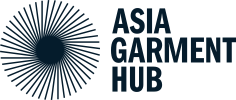Explainer: Pakistan's Revival Plan and What It Means for the Textile Sector
By Juliette Tafreschi, November 01, 2023
Pakistan has faced significant economic and sociopolitical challenges in recent years. Factors such as escalating global commodity prices, worldwide monetary tightening, devastating floods, and political instability have exerted immense pressure on domestic prices, external and fiscal balances, exchange rates, and foreign exchange reserves. As per the World Bank, the economy experienced a contraction of 0.6% in FY23, primarily due to flood-related agricultural losses and disruptions in industry and services caused by supply chain issues. This downturn in economic activity led to a decline in private consumption, affecting labour income and exacerbating poverty levels. Notably, more than 450,000 Pakistanis sought better job opportunities abroad during the first half of 2023, as reported by the Pakistani Bureau of Emigration & Overseas Employment.
An examination of Pakistan's textile sector in recent years shows a downward trend as well. While initially resilient during the early stages of the pandemic, the Pakistani textile industry eventually experienced setbacks. Political changes and unrest disrupted financial support, including the suspension of long-term financing programs and technology and modernization funds. The economic crisis resulted in business closures and increased inflation, exacerbating the global recession's impact on the industry.
The conflict between Russia and Ukraine affected the energy sector, driving up raw material import costs and leading to reductions in subsidies for gas and electricity for Pakistani businesses. Furthermore, the devaluation of Pakistan's currency negatively affected the industry, particularly due to its reliance on imported materials. The high production costs affected the competitiveness of the textile sector and ultimately led to staff reductions and layoffs, especially among female employees.
To address these pressing economic challenges, the Pakistani government introduced an Economic Revival Plan in June 2023. Read our explainer, which highlights key facts about Pakistan's Economic Recovery Plan and its potential impact on the textile sector.
For more background on Pakistan's textile sector, read our interview with Azizullah Goheer, Secretary General, of the Pakistan Textile Exporter Association (PTEA) in our "What's going on in Pakistan?".
What is Pakistan's Economic Revival Plan, and what are its main goals?
The Economic Revival Plan for Pakistan aims to make the economy export-oriented by creating direct and indirect employment opportunities for some 75 million people. Export targets are to be raised to $70 billion. According to the Economic Revival Plan, Pakistan can potentially become a trillion-dollar economy by 2035. To achieve this, the plan focuses particularly on Pakistan's untapped potential in the key sectors of defense production, agricultural livestock, minerals/mining, IT and energy through indigenous development. Gulf and Middle Eastern countries in particular play an important role in mobilizing the necessary funds and implementing feasible projects in a timely manner.
Who supports Pakistan financially?
Pakistan is actively pursuing $6 billion in investments from Saudi Arabia, the United Arab Emirates (UAE), Qatar, and Bahrain within the next three to five years. This financial help will be dedicated to corporate farming with the aim of developing 1.5 million hectares of previously unused land and modernizing the existing 50 million hectares of agricultural land throughout the nation. Pakistan's shared agriculture approach envisions that 60 percent of the crops will bolster the country's food security, while the remaining 40 percent will be primarily exported to Gulf nations to generate foreign exchange.
What is the role of the Special Investment Facilitation Council (SIFC) in the Economic Revival Plan?
In order to implement projects faster and more efficiently, the Pakistani government has established a Special Investment Facilitation Council (SIFC). The SIFC is intended to act as a "single window" for foreign investors, removing bottlenecks and bureaucratic hurdles and bringing stability and commitment to the success of the initiative. Pakistan is facing a balance of payments crisis as a result of poor economic developments in recent years and needs billions of dollars in foreign exchange to finance its trade deficit and repay its international debt in the current fiscal year. The SIFC is primarily aimed to attract foreign financing in the fields of agriculture, mining, information technology, defense production and energy.
But what is on the table for Pakistan's existing export-oriented sectors? Those that are on a decline, like the textile sector?
In a commentary written by Azizullah Goheer, secretary general of the Pakistan Textile Exporters Association (PTEA), for Pakistan's The News International newspaper, he supports the Pakistani government's efforts to revive the economy, but also raises the question, about the plan's impact on existing export-oriented sectors like the textile sector, especially given the removal of subsidies and incentives.
What are the recommendations for the existing export-oriented sectors?
The Pakistani government must ensure that the proposed measures to save the existing export-oriented sectors are actually implemented. It is therefore urgent to include sectors such as textiles, surgical instruments, sports equipment, leather and carpet industries in the reforms. In addition, planned or already abolished reforms for these sectors should be reinstated, as they would otherwise hinder the recovery of exports.
Read More:

What's going on in Pakistan?
Azizullah Goheer is the Secretary General of Pakistan Textile Exporters Association (PTEA). We talk to him about the current state of the textile sector in Pakistan and what challenges and significant changes the textile industry is facing.
